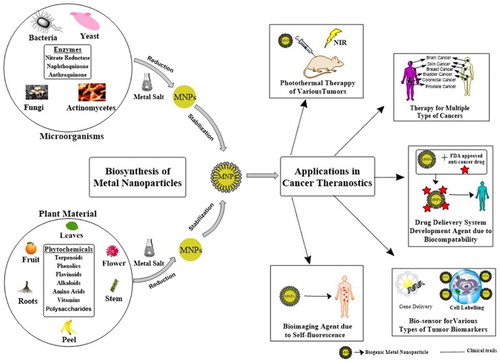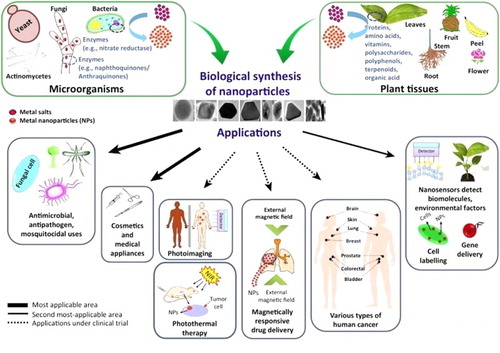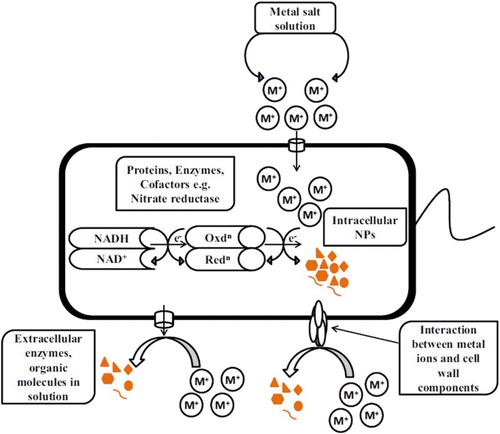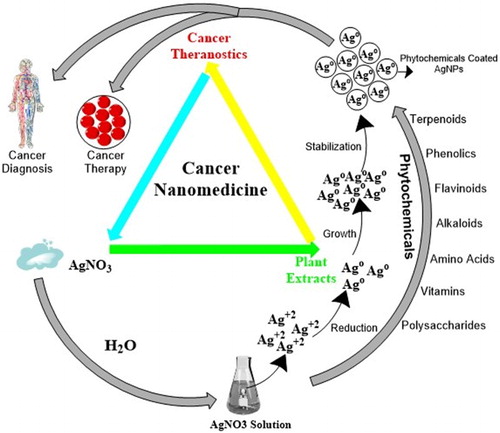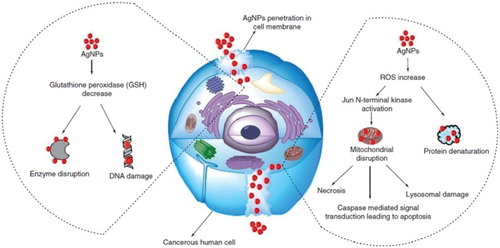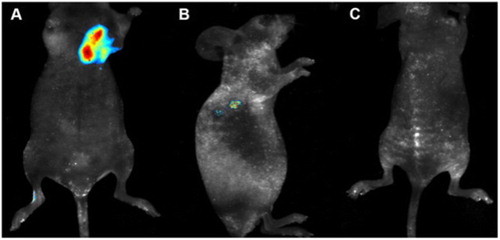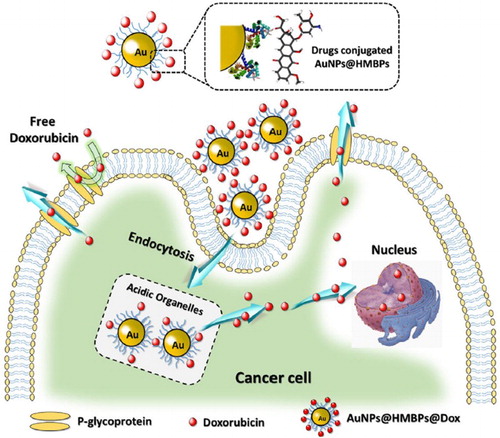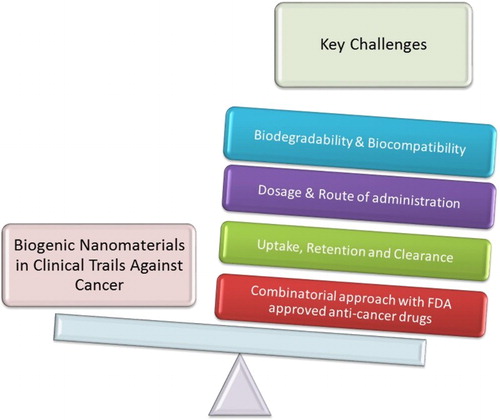Figures & data
Table 1. Phyto-sources for synthesis of bionanoparticles and their anticancer activity in various cell lines for the past 5 years.
Table 2. Microbial sources for synthesis of bionanoparticles and their anticancer activity in various cell lines for the past 5 years.
